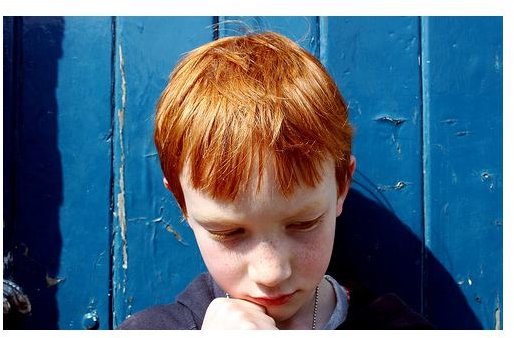The Genetics of Red Hair: What Causes Natural Red Hair?
What Causes Natural Red Hair?
Skin and hair colour are determined by a pigment known as melanin. There are two main categories; eumelanin which is brown-black and phaeomelanin which is a sort of reddish brown. A person with red hair will have much greater amounts of phaeomelanin than they will have of eumelanin. So what determines the difference?
It’s All in the Genes
The answers came to scientists in the late 1990’s. The focus of their studies was chromosome 16 and in particular one of its genes, MC1R. Now the job of MC1R is to make a protein called MC1R receptor (melanocortin 1). This protein plays a key role in the conversion of phaeomelanin to eumelanin. When there are two mutated versions of the MC1R gene, the conversions are not as frequent and so there is a build up of phaeomelanin in the pigment cells. Consequently a person will have red hair and fair skin, they are also prone to freckles.
To understand why this happens we need to cover some basic genetics. You inherit two copies of every gene from your parents, one from your mother and one from your father. So you have two copies of the MC1R gene. If both are mutated in the same way, the respective individual is likely to have red hair.
Inheriting Traits
Of course many people wonder how a child with red hair can be born to parents who are brunette or blonde. That too can be explained by simple genetics, and a pattern of inheritance known as autosomal recessive.
The parents will both have a functioning and a mutant version of the MC1R gene. They are said to be carriers and there is a 1 in 4 chance of them having a child who is a redhead. That’s the probability that the mutant versions from both parents will come together in the next generation. It doesn’t of course mean that if a couple have four kids, one of them will have a child with ginger hair. Odds and probabilities do not work like that. They are not reliant on what went before. It means that each child has a 25% chance of having red hair.
Medical Implications
There is much more to this subject than its curiosity factor. There appear to be medical implications for people with red hair. Although here, like many areas of science, the research is contradictory. In 2002 researchers from Louisville University showed that redheads are more sensitive to pain, and need more anaesthetic during surgery than people with blonde or dark hair. However, in 2005 scientists from the University of Edinburgh found that a MC1R mutation gives redheads a higher tolerance for pain. Research into these aspects of red hair genetics continues.
Redheads should though be more careful about their exposure to sunlight as they are at an increased risk of contracting skin cancer. One theory suggests that melanin, the pigment responsible for tanning (it darkens as a protective mechanism) may be chemically different from the melanin of people with dark hair. Researchers have found that UV rays interact with phaeomelanin, creating molecules that cause damage to DNA, which can lead to cancer.
If you are a redhead, the advice is not to stay out of the sun, but to be careful about how much exposure you get, and to cover yourself with a high factor sunscreen.
Photo Credit
Red-Haired Child: https://www.flickr.com/photos/fotologic/444827660/
